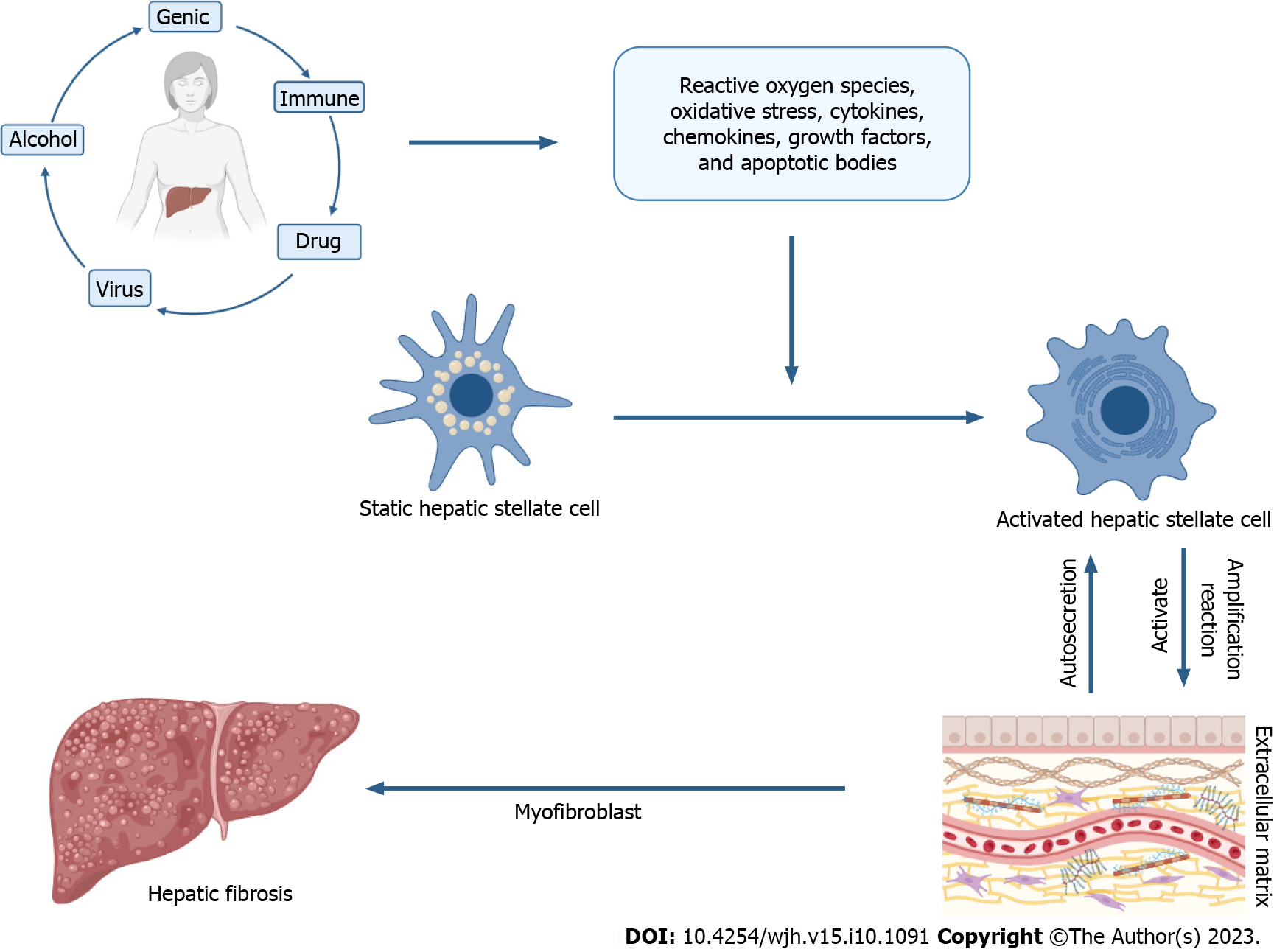Copyright
©The Author(s) 2023.
World J Hepatol. Oct 27, 2023; 15(10): 1091-1108
Published online Oct 27, 2023. doi: 10.4254/wjh.v15.i10.1091
Published online Oct 27, 2023. doi: 10.4254/wjh.v15.i10.1091
Figure 1 The mechanism of hepatic fibrosis.
Due to various factors such as alcohol abuse, viral hepatitis infection, genetic abnormalities, alcoholic fatty liver disease, autoimmune diseases, and medications, the body may produce an excessive amount of reactive oxygen species, leading to oxidative stress. At the same time, these factors may also induce cells to release cytokines, chemokines, growth factors, and apoptotic bodies, as well as activate hepatic stellate cells (HSC) and transform them into myofibroblasts. Consequently, large amounts of extracellular matrix (ECM) substances, such as collagen, non-fibrillar collagens, glycosaminoglycans, and proteoglycans, are autosecreted. The presence of these ECM substances can further stimulate the autosecretion of HSCs, ultimately resulting in fibrosis and impaired liver function.
- Citation: Li Z, Zhu JF, Ouyang H. Progress on traditional Chinese medicine in improving hepatic fibrosis through inhibiting oxidative stress. World J Hepatol 2023; 15(10): 1091-1108
- URL: https://www.wjgnet.com/1948-5182/full/v15/i10/1091.htm
- DOI: https://dx.doi.org/10.4254/wjh.v15.i10.1091









